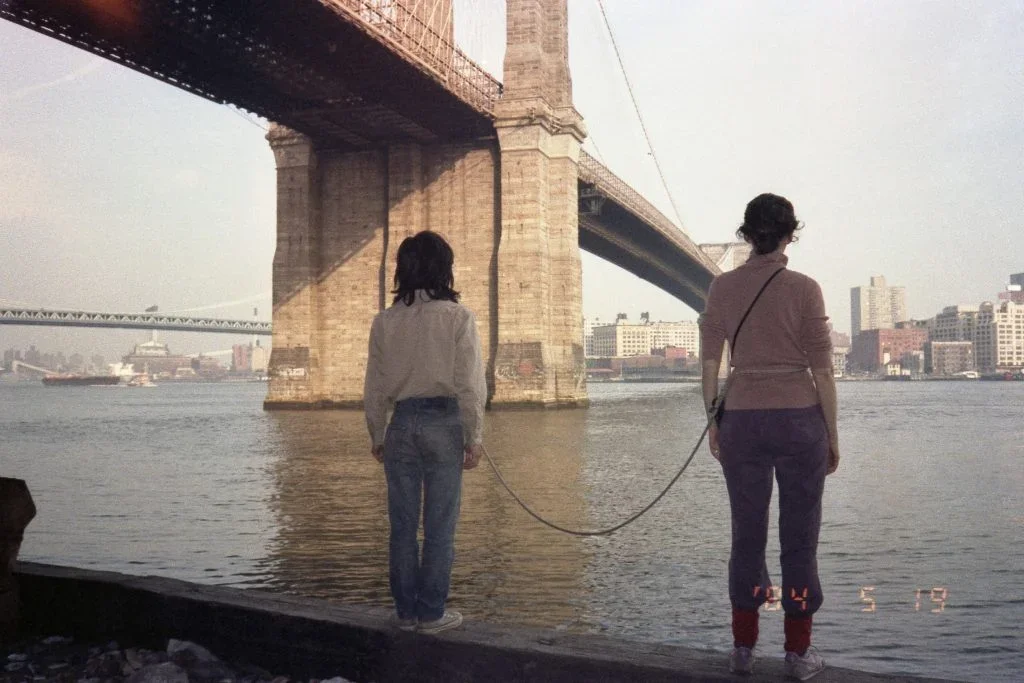Tehching Hsieh
One-Year Performance 1978-1979 (Cage Piece)
Photo: Cheng Wei Kuong
text by Hank Manning
After driving past horse farms on the way to Beacon, a suburb an hour north of New York City, I entered the Dia to join a sea of guests from around the world. We had come to see the oeuvre of Tehching Hsieh, a performance artist who completed six durational pieces between 1978 and 1999 and has since declared himself no longer an artist. However, the exhibition, which he helped design for its two-year run that began in October, is as much a work of art in its entirety as any of its particulars on display.
For his first one-year performance, Hsieh lived in a small cell in his studio, furnished with a bed and sink, pledging to abstain from speaking, reading, and writing entirely. A friend helped him daily by supplying food and cleaning his waste, as well as taking a daily portrait photograph; all 365 now hang in chronological order. We also see the cell that was Hsieh’s home, still furnished with the material goods he had: paper towels, toothpaste, a glass, mattress, gray blanket, bucket, and a change of clothes labeled with his name.
Installation view. Photo: Bill Jacobson Studio, New York
Next, in Time Clock Piece, Hsieh took even more photos—one every hour, on the hour, again for an entire year. The next exhibition space takes the form of a square with the same proportions as the first. These self-portraits are also hung in chronological order, underneath punch cards he stamped for each. Posed next to a clock, they serve as evidence that he rarely slept more than fifty minutes at a time, although Hsieh does list the occasional instances when he failed to clock in due to sleeping through his alarm.
Seemingly tired of spending too much time in his studio, Hsieh proceeded to the opposite extreme—he attempted to spend an entire year outdoors. Daily maps document his walks around lower Manhattan. He also penned the times and locations he ate, defecated, and slept. (To my surprise, he seems to have returned to typical eight-hour nights.) To survive the harsher environment, he had heavier clothes than his prior prison-like attire and carried a few new items, including an “I ❤︎ NY” plastic shopping bag, a radio, and a Swiss Army knife, all now on display. Again, Hsieh gives full disclosure: police detained him for fifteen hours—unfortunately indoors—after getting into a street fight.
Hsieh’s fourth year-long performance was his most collaborative—he spent the entire year attached by an eight-foot rope to fellow artist Linda Montano. The two, staying close together but avoiding touch, were not a couple and had not met prior. Their daily photos show mundane activities—sleeping, cooking, typing. A few days are labeled “Fight.”
The next two rooms take up an equal amount of space in the museum as the previous four. For his final year-long performance, Hsieh declared that he would neither make, look at, read, nor discuss art. Then, for thirteen years straight, he would make art but not publicly reveal it. At the end of this final performance, he released only one piece, which looks like a ransom note reading: “I kept myself alive.” Whatever else he did to occupy his time, the exhibition provides no hints: the two rooms are nearly entirely unadorned. Walking through these open rooms after looking so carefully at each day’s record in the previous four inspires a sense of awe. We imagine the freedom Hsieh may have experienced in contrast to the passage of time in our own lives.
Installation view. Photo: Bill Jacobson Studio, New York
The exhibition is constructed like a scale model of Hsieh’s life experiences. We see photographs taken from every day of his first four strenuous pieces, experiencing time at an accelerated rate, but at the same consistent intervals he charted his progress. Beginning each with a shaved head, his hair is almost the only discernible change over the spans of the first two projects, while the latter two show a vast number of environments. The small spaces between each room even estimate the “life time” (rather than “art time”) of under less than one year Hsieh passed between each piece.
“Why did he do this?” a six-year-old girl asked aloud what we were all wondering. Walking through and imagining myself attempting and failing any similar feat in a fraction of the time, I perceived the work as effective social commentary. After all, no matter how much I assume Hsieh suffered, many people’s real-life situations are even more perilous, as they live in prison cells or unhoused involuntarily and indefinitely.
Tehching Hsieh
One Year Performance 1981–1982 (Outdoor Piece)
Alternatively, it is easy to see Hsieh as a trendsetter. Today, online influencers gain followings through any number of stunts, from, like Hsieh, living in intentionally difficult situations, to the more inane, like counting up to a million or eating dangerous quantities of food. Hsieh likewise often welcomed audiences. While living in his cell, he opened his studio for six-hour periods, allowing anyone to come and see him in person. Living outdoors and then with Montano, he advertised public meetups via flyer.
But Hsieh claims neither of those ambitions. He says he struggled when he first moved to New York, undocumented, spending six years feeling like he just went back and forth between his home and the restaurants where he worked. He asked and answered himself: “What am I looking for? I am already in the piece.” Art comes from life, and life’s most basic and important element is time.
Tehching Hsieh: Lifeworks 1978–1999 is on view at Dia, 3 Beekman Street, Beacon, New York




